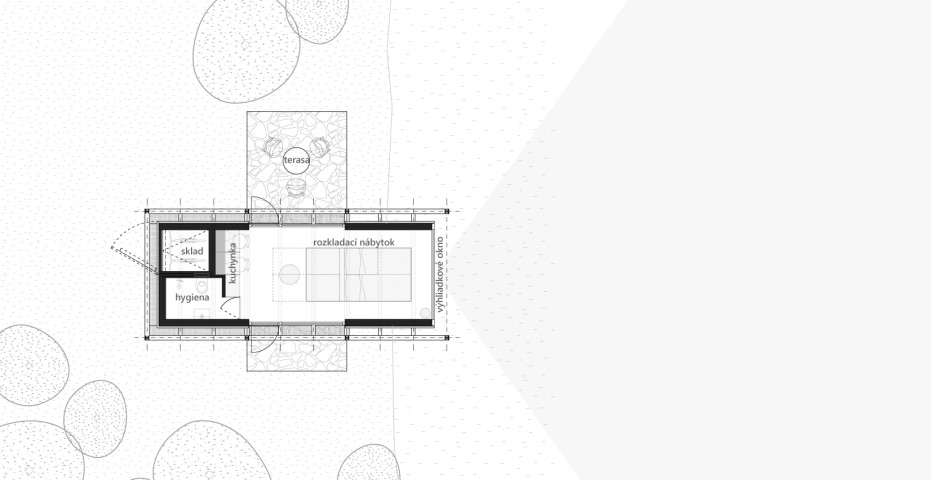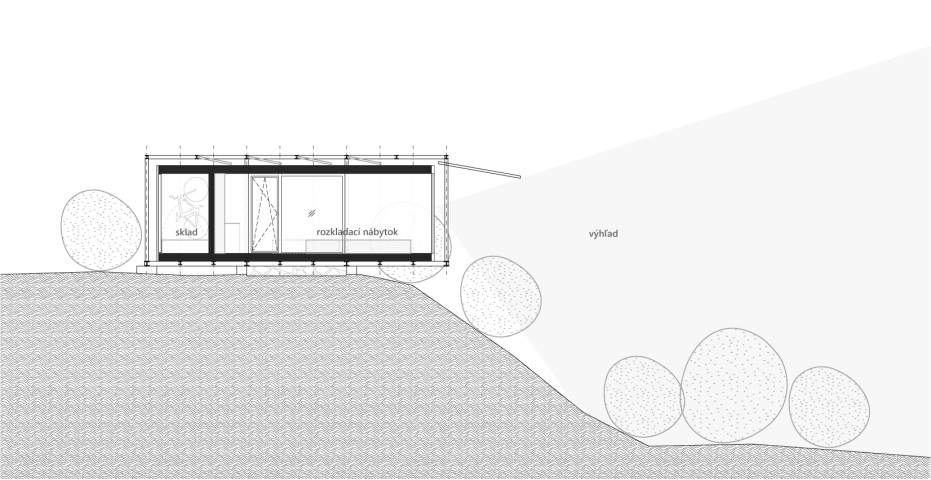Status: Study
Date: 06 / 2023
Glamping
The term glamping originates from “glamorous camping,” meaning luxury camping. It is a form of accommodation in simple structures, shelters, mobile or other small living units closely connected with nature. It has become very popular nowadays. Our design is adapted to diverse localities within our conditions and optimized for landscape views.
Architectural and Structural Principle
To fully embrace the true meaning of “glamorous camping,” we avoid masonry, foundations, and plastering, instead opting for architecture emphasizing flexibility, mobility, and camping spirit. We do not want the glamping unit to be permanently fixed in one location. It should offer various functional variations according to local natural conditions and allow installation or relocation to different sites. This approach leads us to a clean, angular form in contrast with nature. This contrast highlights not only human technocratic creation but also the wildness of the surrounding nature.
We chose a construction system based on lightweight steel HEB profiles and a wooden insulated wall system—e.g., glued CLT panels—with wooden cladding. The steel frame forms the structural skeleton that can be mounted on a trailer or on solid ground and serves as a sturdy frame for anchoring flexible, foldable shading shelters made of steel mesh. This steel structure can be opened or closed depending on the time of year, sun position, preferred views, or intuitive needs. Its primary function is shading and protection against external influences—harsh sun, rain, and even vandalism. The wooden wall construction around the interior features a large glazed surface oriented towards the landscape view.
Operation and Technical Equipment
The shared interior space is minimally furnished with transformable lounge furniture that includes two double beds and built-in cabinetry with a kitchenette. The lounge furniture can be converted into two double beds, two sofas, or combinations thereof. In addition to the common space, there is a sanitary room with a dry toilet and shower. Outside, there is a bicycle storage room accessible from the exterior.
The space is equipped minimally but effectively. It allows hot water preparation using a kettle, cooking on a camping gas stove, warm water for showering and washing, electricity for general use, and charging an e-bike.
Energy is supplied by photovoltaic panels on the roof, charging a battery located under the bicycle storage. The battery powers lighting, sockets, water heating, and space heating. Heat is also gained through solar radiation via the glazing, which reduces battery energy consumption. Water is obtained according to local conditions, e.g., from a well or transported in containers for the number of guests and nights. A water tank is installed above the sanitary room.
Conclusion
Glamping is currently popular among tourists, bikers, campers, or anyone wishing to get close to nature for a few days while staying under a solid roof. Various forms of this concept are emerging in our country—some better, some worse. Thanks to our client, we contribute a hopefully good reference.
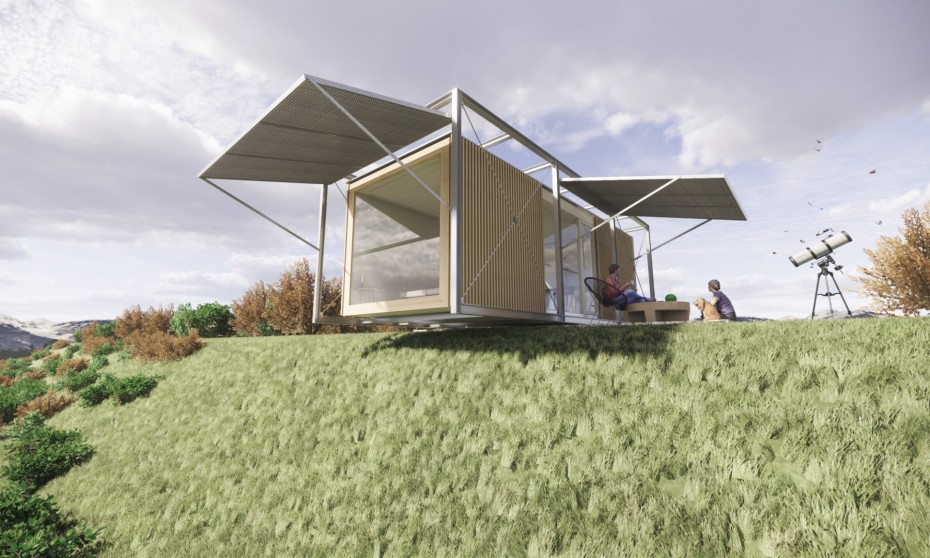



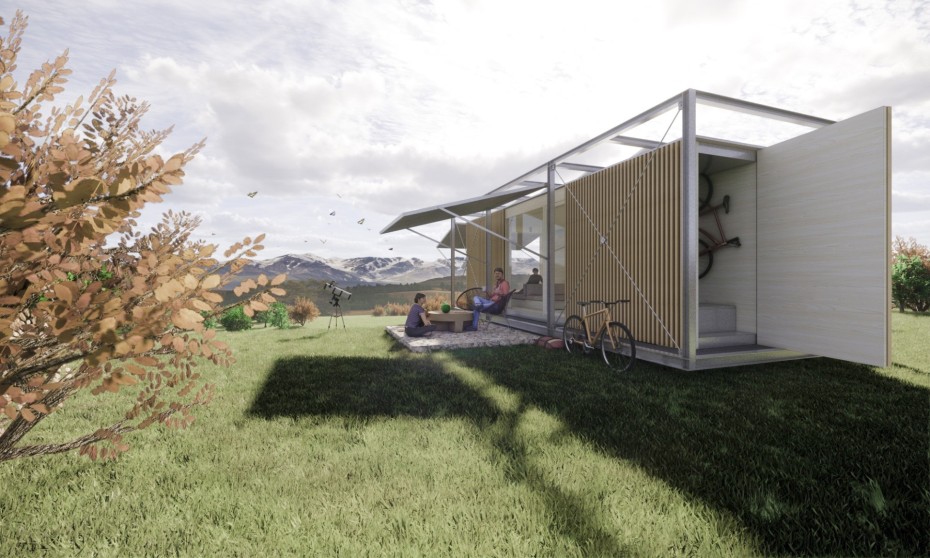

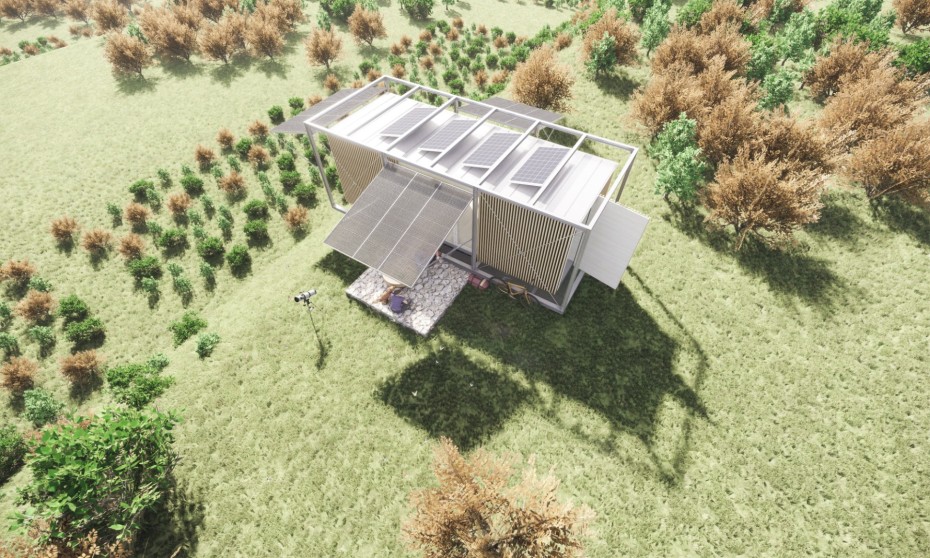
Plans
